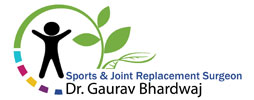Cosmetic Lower Limb Lengthening: Risks & Available Options
Medically Limb lengthening procedures are indicated when there is some obvious deformity or limb length
discrepancy. But compelled by the psychosocial implications of short stature for patients, Dr Gaurav Bhardwaj
and his team are increasingly dealing with distraction osteogenesis for cosmetic limb lengthening. To the
degree this is a realistic expectation. But evaluation of the risks and benefits of this treatment are very
important.
Limb lengthening with the Ilizarov / monorail apparatus has been used for pathological conditions such as
dwarfism, hemimelia and other congenital or acquired limb-length discrepancy years and in recent years we
have broadened the scope to include cosmetic and psychological indications based upon patient demand.
Under Dr Gaurav Bhardwaj team’s strict protocol the treatment typically starts with patient’s interview to take
him/her through the planned procedure and post operative course which is demanding both physically and
psychologically. The treatment generally involves first surgery where bone is cut ( corticitomy) at the selected
site, most common around the knee and 3-4 pins are put on both sides of the cut connected by a frame which
remains outside the skin ( therefore called as external fixator).. Frame comes with a distraction device. Within
few days of surgery, patient is taught to start gradual distraction which should be strictly followed. Gentle pulling
of bony cut ends apart ensures the bone remains sticky as it increases in length. Too slow bone will heal back
and won’t increase in height, too fast the ends will go away with no stickiness between meaning a fracture
which won’t unite. Nowadays some doctors also put a nail in the bony canal to maintain the bony alignment.
It is safe to increase height by 5-6 centimeters, as the nerves, muscles and vessels may not tolerate more than
this. During this process which is dynamic there may be loss of alignment, deformity developement, pin
infection or loosening or several other reasons needing additional interventions. Once required gain in height is
achieved frame is kept on for around 2 more months for bone to get consolidated. If frame is removed too soon
the bone can recoil back and height gain is lost. Once bone has healed fixator and pins need to be removed.
The indications for surgery are (1) the presence of a clear reason to undergo limb lengthening, (2) strong
motivation, and (3) consented to undergo the procedure after complete awareness of the nature of surgery,
possible complications, and the rehabilitation program.
On the basis of the established criteria, treatment outcome is excellent in ~55% patients, good in ~40%.
Risks of pin tract and soft tissue infections, neuropathy ( stretching of the nerve causing sensory or movement
dysfunction), and joint displacements. Regular assessment of hip. knee and ankle ROM during and after
external fixation to assess for soft tissue complications and clinic-radiologic monitoring for hip, knee and ankle
congruity are done to rule out any sub-luxations. There may be incidences of osteomyelitis during treatment.
When distraction is commenced which is painstaking procedure, speed of regeneration, incidence of any
deformity, or fracture of regenerate during and after external fixation should be closely monitored for.
Living with fixators and pins poking out of legs for months, keeping pin sites clean to prevent them from getting
infected and need to follow the rigorous compliance with distraction and non weight bearing needs very strong
will power and motivation.
Soft tissue complications (~28%) of which (46%) may need re-interventions.
1. Pin tract infections (~3.82%),
2. Neuropathy (~ 4.58%),
3. Equinus of the ankle (~9.16%),
4. Fixed flexion deformity of the knee (~ 11%).
Bone-related complications ~17% of which (~73%) needed re-interventions.
1. Incomplete corticotomy of the tibia that needed osteoclasis
2. Premature fibular consolidation requiring reosteotomy with the patient under anesthesia
3. Osteomyelitis ( deep bone infection)
4. Delayed regeneration / non union
5. Deformity of the regenerate while wearing the fixator,
6. Deformity of the regenerate after removal of the fixator
7. Subluxation of joint.
8. Late fracture through the regenerated bone.
In conclusion the decision to undergo both limb lengthening by bone distraction for cosmetic increase in height
is a serious decision. It should be taken only after fully understanding the complexities of the surgical
procedures, possible complications, psychological dimensions and with realistic expectations.
